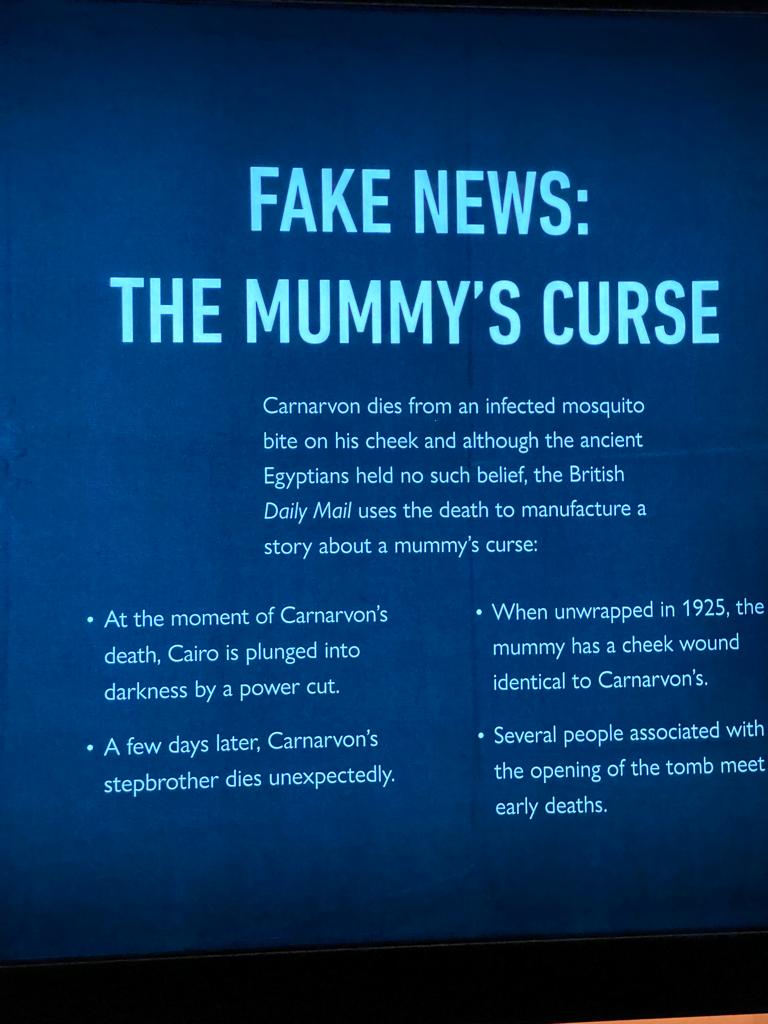One hundred years ago on this day, November 4, the tomb of pharaoh Tutankhamun was discovered. Egyptian workers (and possibly a single boy working away from the main area) found the steps to this extremely well-concealed tomb. This archaeological dig was led by British Egyptologist Howard Carter with the patronage of George Herbert, 5th Earl of Carnarvon.
Despite the tomb having been robbed in ancient times, most of its original artifacts were untouched. The discovery provided incredible insights into the material culture of ancient Egypt, plus a deeper understanding of the rites and lifestyles of the upper class of this ancient civilization.
Tutankhamun has now become the symbol of ancient Egypt. His brief life and reign saw the return of Egypt to a polytheistic religion (with many deities worshipped) after the brief proto-monotheism focusing on the sun god Aten being imposed by Tutankhamun’s father Akhenaten.
He became pharaoh when he was either eight or nine, under the viziership of his eventual successor, Ay. He died just a decade later, likely as a result of general poor health, a leg fracture, and a severe malarial infection.
The Curse Was Made Up By British Newspapers
Curses are not real. but the legendary Tutankhamun’s curse is even more fake as it was all made up by British newspapers and other westerners. There’s nothing written in the tomb about a curse on the trespassers. The whole affair was crafted after Carnarvon’s tragic passing on April 5, 1923. He cut open a mosquito bite on his cheek, which became infected.
British newspapers shared sensational stories about the tomb being cursed, even going as far as inventing a text for the curse. A scientific paper on the Earl showed that nothing supernatural occurred and another work shows that the average life expectancy for the people working on the tomb was perfectly normal for the time.
Carter himself said the curse was nonsense and that the sentiments of an Egyptologist are not one of fear but of respect and awe.
Panel from the Tutankhamun: Treasures Of The Golden Pharaoh Exhibition at the Saatchi Gallery. Image Credit: Dr Alfredo Carpineti
Carter Stole From The Tomb
The death of Carnarvon led to tension between Carter and the Egyptian government based on who should control access to the tomb – this even led to Carter stop working on the tomb for most of 1924. In the end, most of the artifacts from the tomb went to the Egyptian Museum in Cairo, something that was not standard practice at the time where dig sponsors would get a haul of artifacts too.
However, it seems that Carter might have pocketed a few things himself. The rumors he did had been going on for a century – but proof came just a few months ago when researchers found letters linking him to the thefts. All 18 items believed to have originated in the tomb have now been returned to Egypt.
A Dagger From The Sky
The treasures of the tomb are incredible – but there is one that is literally out of this world. An iron dagger made from meteorite.
The incredible object is beautiful and ancient Egyptians had a specific hieroglyph to indicate “iron from the sky.” This not only shows that they knew iron chunks would fall occasionally from the heavens, but they also track them when they saw them fall and manufacture precious objects with them. All of that about 2,000 years before western cultures became equally aware of the same.
The iron meteorite dagger of King Tutankhamun, about 34.2 centimeters (13.5 inches) in length. Image Credit: Daniela Comelli
A Twisted Family Tree
Egypt’s 18th Dynasty rivals G.R.R. Martin’s Targaryens for the amount of incest going on.
Akhenaten, Tutankhamun’s father, was married to Nefertiti. Nefertiti was once considered the mother of Tutankhamun, but genetic analysis suggests that his actual mother was Akhenaten’s sister whose name is unknown and is referred to as “The Younger Lady.”
Tutankhamun married his half-sister Ankhesenamun (daughter of Akhenaten and Nefertiti), and during their marriage they lost two daughters. They had no other heirs.
An Erection In Honor Of Osiris
Tutankhamun’s mid-section photographed by Harry Burton after the mummy of the pharaoh was unveiled. Image Credit: Reproduced with permission of the Griffith Institute, University of Oxford
Howard Carter reported that Tutankhamun was mummified with his penis erect, something that is believed to be most likely deliberate. During the examination by Carter and anatomist Douglas Derry, the penis and other portions of the body broke off, and at one examination in 1968 was not present when the mummy underwent its first CT scan.
The body of the pharaoh was covered in deep black resin, something believed to be in honor of Osiris. Osiris was associated with fertility and rebirth, so the erect phallus could be another auspicious symbol for the pharaoh linked to the ancient god.
Tutankhamun’s remains have now been taken back to his original tomb, where they have been put to rest once again after major restoration works. The tomb itself looks fantastic and it has been structured in a way to be respectful of the pharaoh’s final resting place as well as preserve the incredible finding that this discovery represents.
Source Link: Five Things You May Not Know About King Tutankhamun 100 Years After His Discovery
